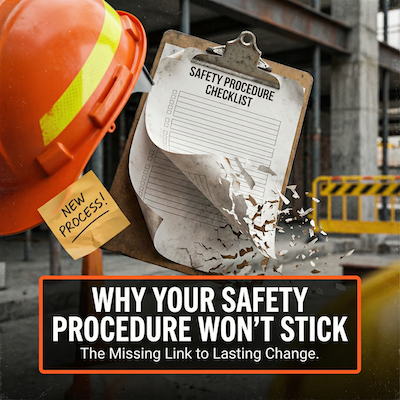Safety Beyond Silos: Is It Time for a Shift?
The corporate world has long been dominated by siloed structures - independent departments each with their own roles and responsibilities. In the realm of health, safety, and wellbeing, this has often meant that physical safety fell under the purview of safety professionals, while mental health was the domain of HR or dedicated mental health professionals. However, recent discussions on LinkedIn are questioning the effectiveness of this approach. We thank all contributors to this debate and in appreciation have listed names where we could.
A Multi-Disciplinary Approach to Safety
Psychologist and author Clive Lloyd opened the debate by suggesting that safety regulators and advisory bodies should avoid burdening HSE staff with mental health responsibilities. Gill Kernick, a Transformation Director at engineering firm Arup responded, challenging the usefulness of siloed functions and advocating for a more integrated approach. Kernick proposed a reconsideration of the current division of responsibilities, promoting trans-disciplinary teams working together to take a holistic perspective of employees' experiences.
Lloyd conceded to the potential drawbacks of compartmentalised functions and agreed that more holistic processes need to be explored. This sentiment was echoed by Vattenfall Client Representative Gordon Foot who voiced that safety should be integrated and part of everyone’s role.

Mental Health: A Specialised Field
However, the shift towards integrated health and safety functions raises questions about the qualification and capacity of safety professionals to manage mental health risks. Marr Contracting's EHS Leader Phil Tradgett pointed out that the traditional risk management approach might not be applicable to the intricate issue of mental health, where the sources of mental ill-health could be a medley of work and non-work-related issues. The involvement of competent internal psych resources or external resources seemed to him as the only viable approach.
Adding to the conversation, Dr. Rob Long, a renowned authority on safety, criticises the safety industry for claiming expertise in mental health where it lacks knowledge and experience. He emphasises that those seeking guidance on mental health in the workplace should consult professionals with genuine expertise in the sector, as the safety industry is ill-equipped to handle such matters.
Breaking the Silos
The conversation thus far suggests that an integrated, trans-disciplinary approach to safety could be beneficial for organisations, fostering a more holistic understanding of employee health and wellbeing. Yet, implementing this shift is not as simple as merging departments or reassigning responsibilities. This transition calls for a fundamental rethinking of how we approach safety and wellbeing at work. It requires learning from other fields, questioning existing paradigms, and continuously adapting to new insights and evidence. The challenge lies in taking these ideas from debate to practice, ensuring a healthier, safer and more supportive work environment for all.

The Need for Collaboration
As the debate unfolds, it becomes clear that a collaborative approach between safety professionals and mental health experts is necessary for an effective transition. Helen Sadgrove, Managing Director at HSE Global, suggests that multiple disciplines should work together, focusing on the design of work and the impact of work on mental health. This collaboration can lead to a more comprehensive understanding of the needs of employees, ultimately improving their overall wellbeing.
Greg Smith, another contributor to the discussion, reminds us that it is ultimately an organisational choice whether safety professionals should be responsible for mental health management. It is essential for organisations to critically assess their structure and resources, determining the most effective approach for addressing employee wellbeing.
Challenging the Status Quo
The idea of breaking down silos and redefining the roles of safety professionals and mental health experts is controversial. As the safety industry faces this challenge, it is crucial for professionals to engage in critical reflection, considering the impact of their work and the ethical implications of claiming expertise in areas beyond their qualifications.
Gill Kernick highlights that power dynamics within the safety industry can contribute to the lack of critical reflection and perpetuation of siloed functions. To overcome these barriers, it is essential to foster open dialogue, embracing diverse perspectives and ideas.

Moving Forward Together
The journey towards a more holistic and integrated approach to employee health and wellbeing is a complex one. It demands open-mindedness, willingness to learn from others, and a commitment to continuous improvement. By embracing collaboration between safety professionals and mental health experts, organisations can create healthier, more supportive work environments that benefit both employees and the organisation as a whole.
In conclusion, the debate sparked by Clive Lloyd and the insightful contributions from various professionals serve as a call to action for the safety industry. It is time to reassess the effectiveness of siloed functions, explore more integrated and collaborative approaches, and ensure that our workplaces provide the care and support needed for both physical and mental health. By working together and challenging the status quo, we can create a brighter future for employee wellbeing.










.svg)
